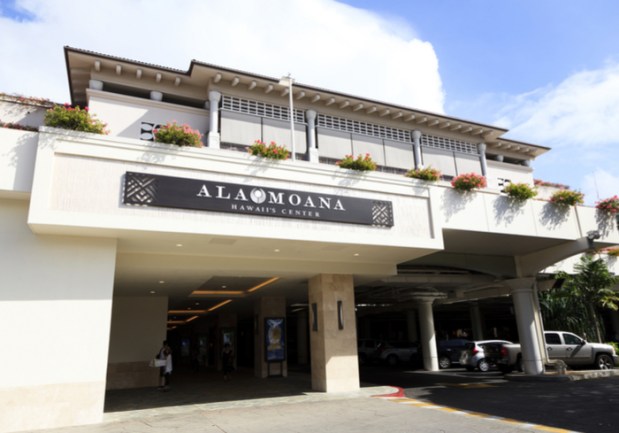While Some Malls Are On The Decline, Other Malls Bring In Billions In Sales

A year after General Growth Properties’ (GGP) Providence Place opened in 1999, the mall boasted 120 tenants, including a slew of upmarket retailers, seven restaurants and two cinemas. The building, which was built at a cost of half of a billion dollars, contained nearly 1.3 million square feet of space — and quickly became a hot retail destination.
And only 5 to 7 percent of leasable space was expected to remain unoccupied after the 2000 holiday season, mall officials predicted at the summer opening. “We’ve met or exceeded people’s expectations on what they thought it was going to be,” Providence Place General Manager Joseph Koechel told the Providence Journal at the time.
But, since then, some of America’s malls haven’t fared so well. For years, occupancy rates at the nation’s malls have been falling, as have foot traffic and consumer interest. In 2018, department stores closed in U.S. malls quietly — many without formal announcements. Yet some malls are making it big, brining in billions of dollars of sales, CNBC reported, such as the Ala Moana Center in Hawaii, Sawgrass Mills in Florida and Oakbrook Center in Illinois.
The Mall in Hawaiian Paradise
When GGP went to sell a 25 percent stake in Honolulu’s Ala Moana Center, the mall was worth a grand $5.5 billion. The buyer of the stake, AustralianSuper, also picked up a set of office buildings for a cool $907 million. Today, based on CNBC’s estimates, the mall is worth $5.74 billion and has sales per square foot of $1,450.
The mall’s wide mix of businesses — from discount retailers to luxury department stores — has drawn customers from the local area in addition to Hawaii’s tourists. Moana’s tenants include the very luxurious Louis Vuitton and Gucci to more mainstream retailers such as Banana Republic and Abercrombie & Fitch. All together the malls tenants generate $1.2 billion in annual sales, according to REIT Magazine.
Beyond Hawaii, GGP is one of the largest shopping center owners and operators in the U.S. The company rejected a buyout offer from global real estate investment firm Brookfield Property Partners in December. Brookfield sought to purchase the 66 percent of GGP shares that they did not own in a $14.8 billion deal.
Tourist Traffic in the Sunshine State
In the sunshine state, Simon’s Sawgrass Mills boasts 2.5 million square feet and contains 500 shops and kiosks. In 2015, Sawgrass Mills had few vacant stores — 96.5 percent of the mall was occupied. Today, the mall’s stores generate a whopping $1,149 in sales per square foot per CNBC’s estimates, and the mall’s asset value itself is worth $4.1 billion.
Like Ala Moana, Sawgrass benefits from tourist traffic — particularly customers from South American countries. A mall spokesperson told the Miami Herald that the fastest growing Latin American markets for the mall are Argentina, Mexico and Ecuador.
Visitors from these countries are not buying the goods based on price, they are there to pick up items for the experience of shopping at Sawgrass — some of the mall’s merchandise is actually priced higher than at stores in other countries, according to Gregg Goodman, the president of the Mills division of Simon Property Group.
Beyond Sawgrass, Simon is turning to technology to help make its malls more accessible to consumers. The mall operator is rolling out chatbots, for example, that can answer customer questions. The bot can help shoppers find an ATM or restroom, browse restaurants in the shopping center or answer specific questions by routing queries to mall representatives.
And, to attract startups, the mall operator is also offering a “scaleable retail platform” called The Edit. Through The Edit, eCommerce startups can test drive physical commerce in front of a live customer audience — without the long-term lease typically required for a mall store.
Outdoor Spaces in the Midwest
Several years ago, the Oakbrook Center mall, which opened in 1962, was in desperate need of repair. It was “outdated” and “was in need of a facelift,” Chuck Fleming, the mall’s senior general manager, told a local daily newspaper, the Daily Herald. But, since then, renovations have opened up spaces for new retailers.
The mall got a major overhaul — to the tune of $30 million — that included converting the lower level of Neiman Marcus into two restaurants — Perry’s Steakhouse and Old Town Pour House. Oakbrook’s new restaurants come as more and more “anchor stores” at shopping malls across America are being replaced with restaurants.
GGP also split the former Bloomingdale’s, which closed in 2012, into space for six individual retail tenants, including Tommy Bahama, Lululemon Athletica and The Container Store – among others. Today, the mall’s total asset value is $3.5 billion, according to CNBC, with sales per square foot at $911.
Future Malls
Nearly two decades after opening Providence Place, GGP is building another mall — only about two hours away from Providence in Norwalk, Connecticut. But it may be the last one — at least for awhile. “We’re not building any more,” GGP Chief Executive Sandeep Mathrani told The Wall Street Journal. “This could be it for a long period of time.”
According to the paper, Nordstrom and Bloomingdale’s will anchor the $525 million SoNo Collection, which is scheduled to open in 2019. But the large luxury retailers will be joined by 80 to 100 smaller stores, with up to 10 restaurants and maybe even a health club. Whether this mall sees the same occupancy rates as Providence Place remains to be seen, but GGP has pre-leased about 60 percent of the mall’s available space, according to the paper.
